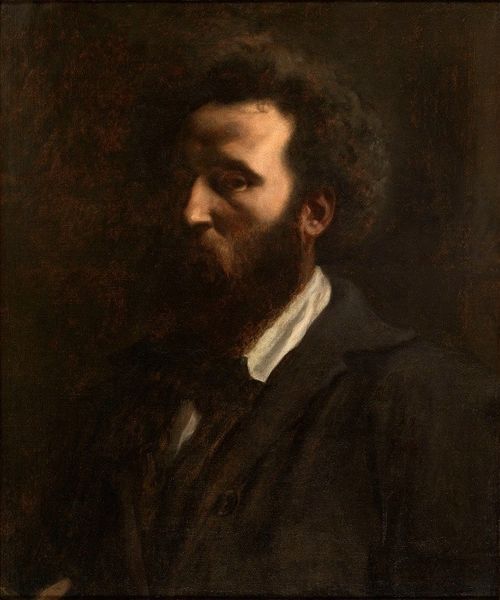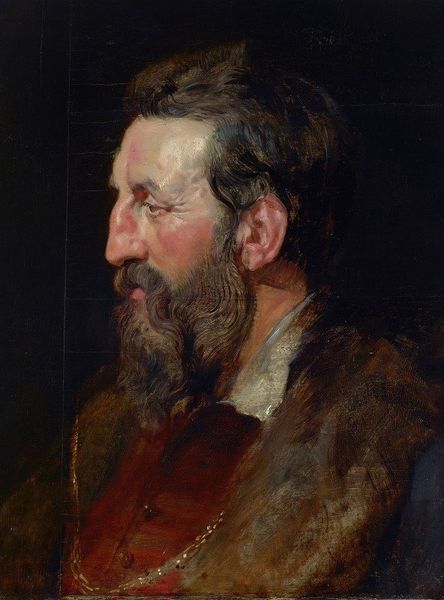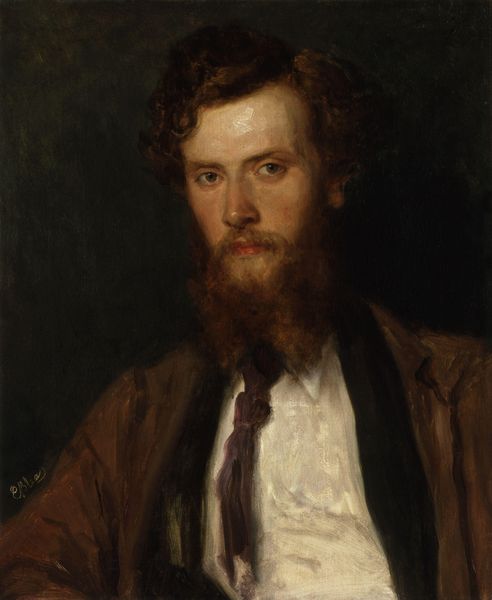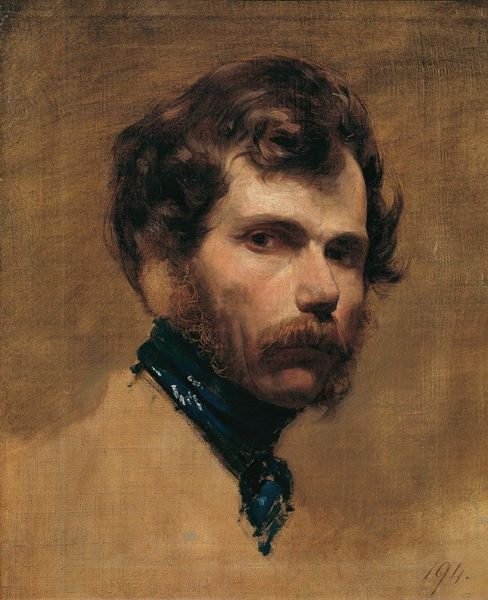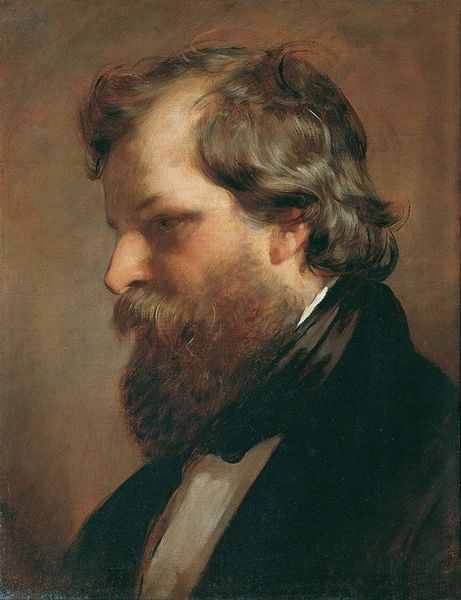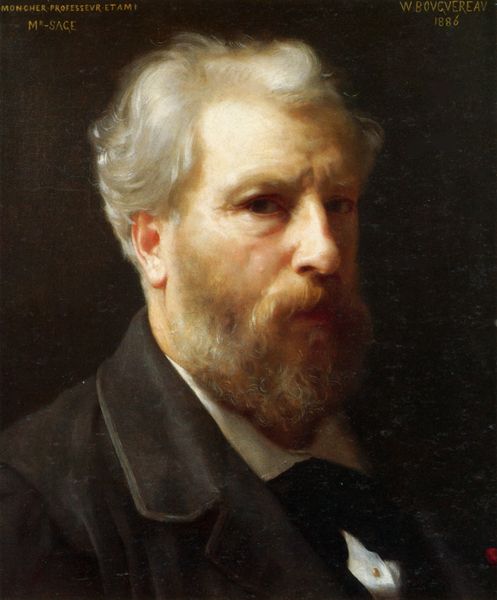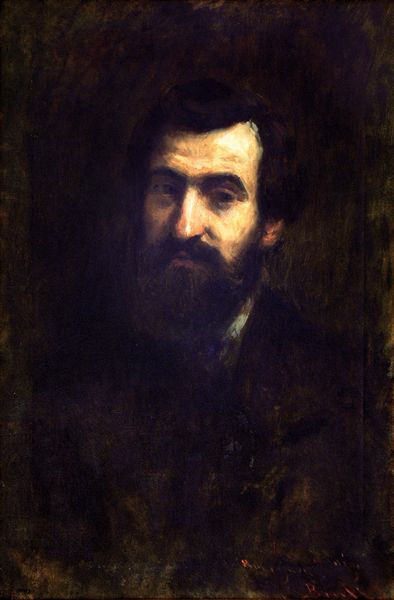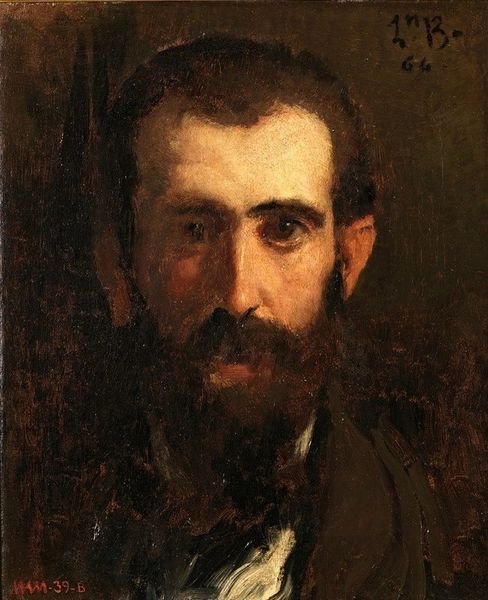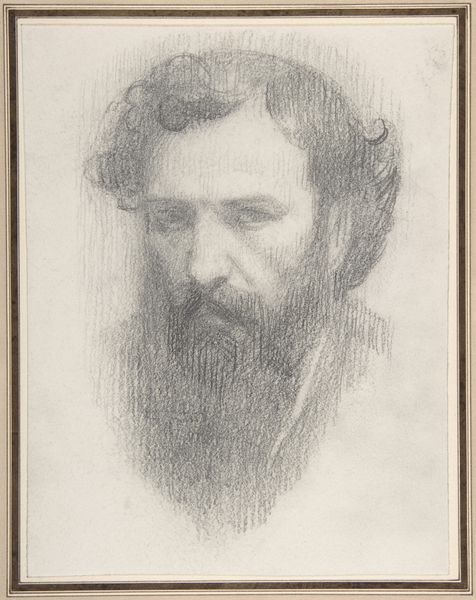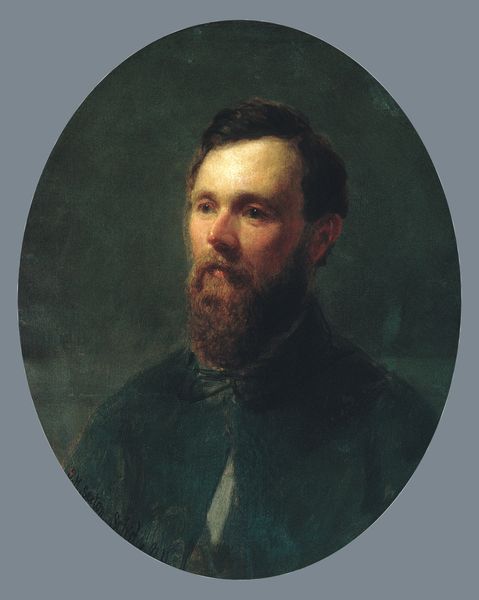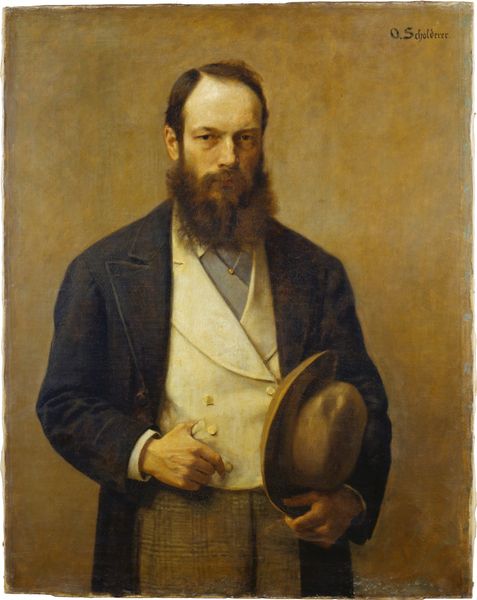
painting, oil-paint
#
portrait
#
self-portrait
#
painting
#
oil-paint
#
romanticism
Copyright: Public Domain: Artvee
Curator: Look at this self-portrait. It’s a compelling artwork created in 1846 by the Austrian artist Friedrich von Amerling, who was celebrated as a portraitist to the Austrian imperial family and aristocracy. Editor: My first impression is that the subdued color palette really heightens the intensity of his gaze. It’s almost confrontational. There’s a sense of introspection but also challenge. Curator: It's quite typical of Romanticism. Artists during that era explored individualism, which Amerling achieves through careful lighting. Notice how the light softly illuminates his face, directing our attention. The brushstrokes around the periphery of his face are very faint but help capture the light and volume. Editor: True, the handling of light and shadow are essential to its success, yet I keep considering the implications of a self-portrait during this time. It's such a conscious construction of the artist’s image, designed to cultivate a particular perception within Viennese society. It reflects Amerling’s role as a respected figure in Austrian artistic circles. He controls how we perceive him. Curator: Yes, but it's not just about image construction. Semiotically, one must analyze the elements independently, like the open white shirt or his red scarf. This conveys his artistic persona—unbuttoned, informal, maybe even rebellious. This is clearly someone in touch with nature and their emotions, someone outside of the rigid structures of academic convention. Editor: Interesting point, but let’s consider the institutions involved in this self-fashioning. What kind of power did artistic academies wield at the time? Amerling was operating within and against specific established structures and aesthetic expectations. We must analyze this portrayal through that socio-political landscape to truly understand it. Curator: Perhaps. But it could also simply be Amerling grappling with identity. By exploring and representing himself, he’s participating in a philosophical exercise—using himself as the prime subject, a means to unravel fundamental truths of existence and meaning through shape and colour. Editor: So, regardless of intention, this portrait leaves us with enduring questions about identity, presentation, and legacy—the intricate layers of meaning inherent in a painted self-representation. Curator: Absolutely, the artwork operates beyond time—through aesthetic structure—inviting us to inspect elements anew.
Comments
No comments
Be the first to comment and join the conversation on the ultimate creative platform.
